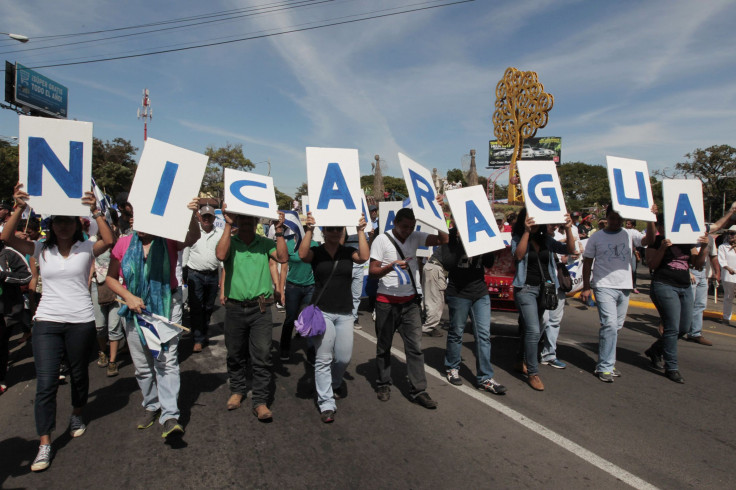Nicaragua Canal Project Set To Break Ground As Protests Continue

Nicaragua is set to break ground on a $50 billion interoceanic canal Monday, heralding the start of what officials say will be the largest infrastructure megaproject in Latin America, to rival Panama's canal. But the secretive and highly controversial plans for the canal are moving ahead against the backdrop of fierce protests, continued secrecy and a blanket of skepticism over the project.
Nicaraguan government officials and representatives from the Hong Kong Nicaragua Canal Development Investment Company (HKND), which was contracted to develop and manage the project, will hold two inauguration ceremonies Monday between 5 p.m. and 7 p.m. local time, according to local reports. One will take place in the capital of Managua, while the other will be in the southeastern town of Rivas, a focal point for some of the mass protests that have railed against the canal plans in recent weeks.
Although skepticism has abounded over the project – with few details on the exact canal route, environmental impact, cost breakdown, expropriations, relocation plans or investors – Chinese laborers have been seen coming into towns near the canal route to survey the land, indicating that the project is forging ahead despite the mass backlash. But with the project mired in opaqueness, a larger question remains whether the canal will actually be finished within the government’s estimated five-year timetable – or abandoned before completion.
Residents of Rivas and other municipalities along the proposed canal route, including Nueva Guinea, San Miguelito and Bluefields, have poured into the streets in recent months to push back loudly against the threat of expropriations and environmental damage they say the project will unleash. Members of the Cocibolca Movement, a protest group in Rivas, announced they would boycott the Monday ceremony.
The protesters have rallied against the government of President Daniel Ortega, who awarded the concession for the canal to HKND last year without opening up bids to other companies. Nicaragua’s environmental community has complained that the government’s commissioned feasibility and environmental impact studies have been hidden from public view. Environmentalists have demanded a public, independent scientific review of the ecological impacts of the canal project, saying the construction of the waterway could potentially damage Lake Cocibolca, the country’s main freshwater source.
Wang Jing, the enigmatic CEO of HKND, has also been a target of questions around the canal plans. An Associated Press investigation last year revealed that Wang’s telecommunications company Xinwei had not completed several infrastructure projects undertaken outside China in recent years. Meanwhile, Wang has declined to name investors backing the project, leading many to speculate that the Chinese government is financing it behind closed doors. Protesters have mounted anger against both Wang and Chinese laborers working with HKND. Signs reading “Fuera Chinos” – “Chinese Get Out” – have become a common sight at demonstrations.
Nicaraguan government officials maintain that that the 173-mile-long canal, which will bisect the country, will create some 50,000 jobs and boost living standards for Latin America’s second-poorest country. But skeptics say that with HKND contracted to own the rights to the canal for the next 50 years (and potentially another 50 after that), with a $10 million annual payout once the canal is operational, Nicaraguans by and large won’t be seeing many financial benefits.
© Copyright IBTimes 2025. All rights reserved.






















